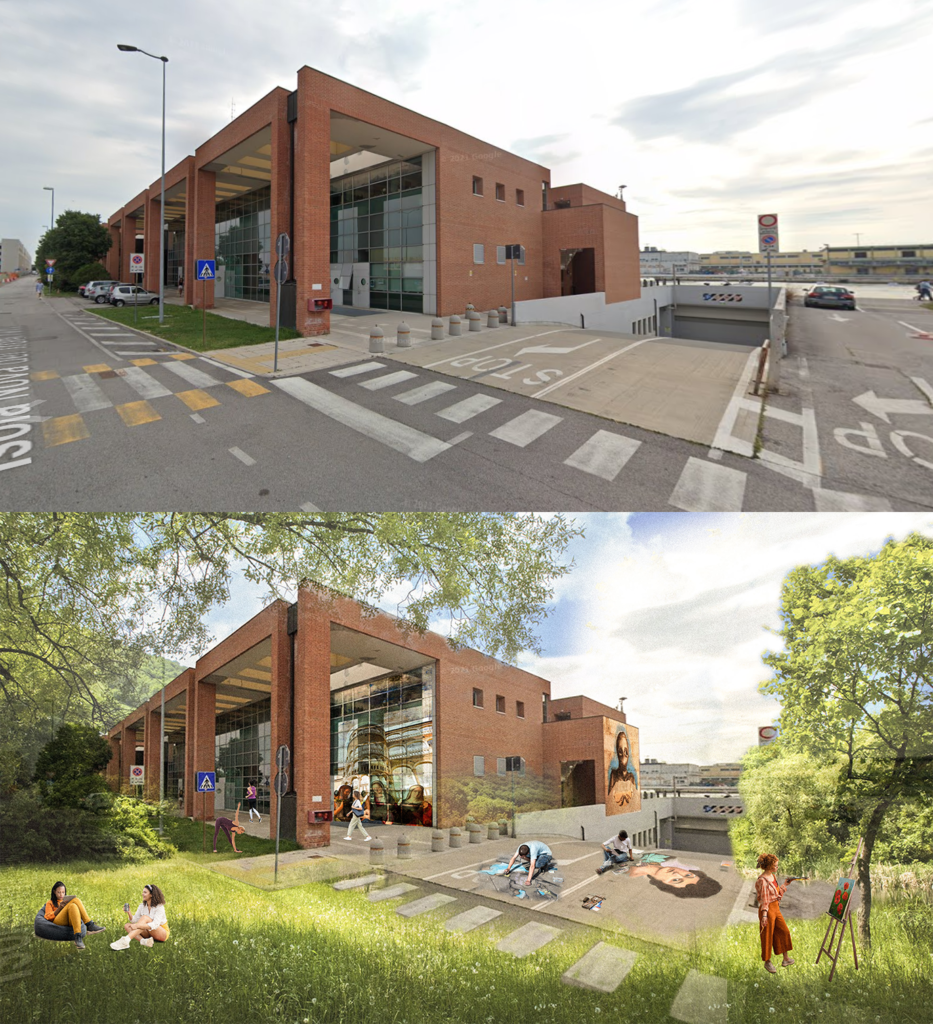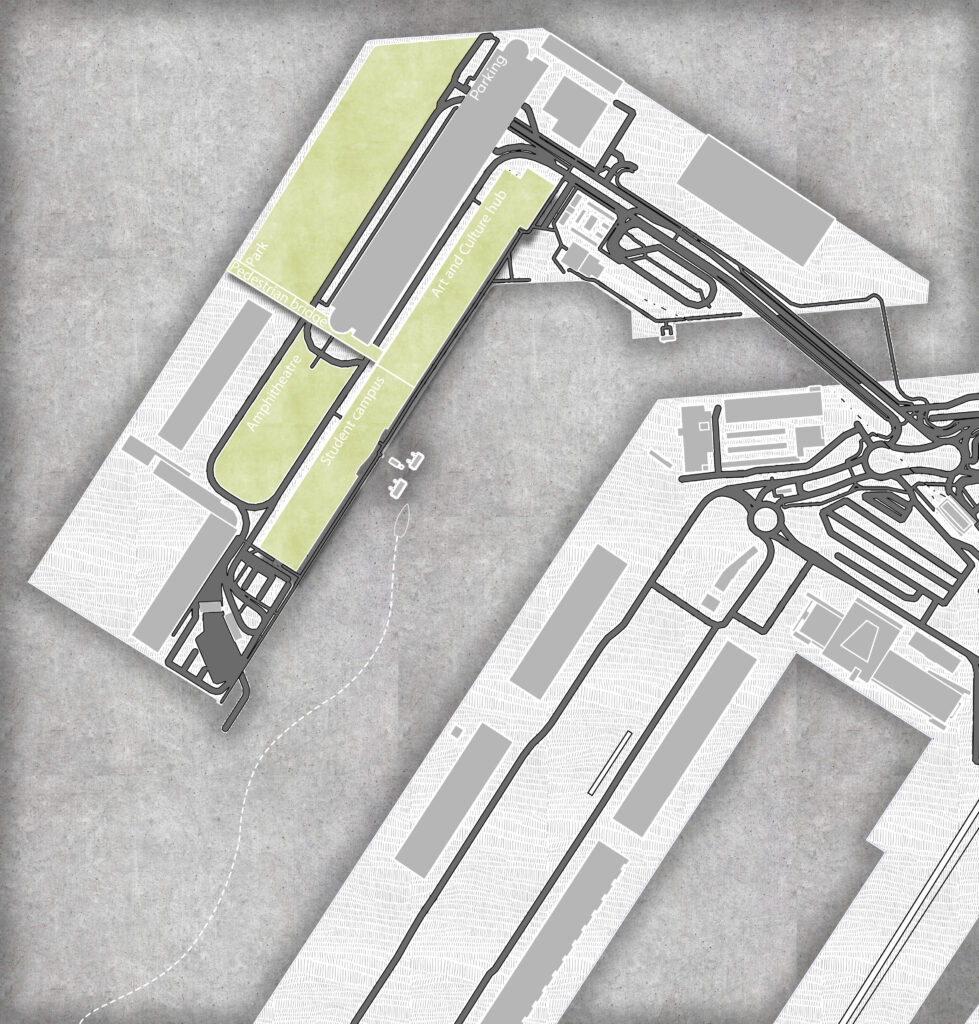Sofia Ryabinina & Beyza Ayaz
Sustainable Healthy Cities: Building for the Future | Summer School students
Email: [email protected]
Abstract
Venice, overwhelmed by tourist influx, faces sustainability challenges and limited space, transforming into a landmark rather than a livable city. The site for the course “Sustainable Healthy Cities: Building for the Future” is Tronchetto, historically linked to transportation and parking for visitors. This area requires functional enhancements to become more engaging and appealing to users.
The project primarily targets students who struggle to find accommodation in central Venice, while also considering tourists as a secondary audience. We envision students leading the transformation of Tronchetto, infusing it with the vibrant, artistic spirit of Venice to create a space that resonates with identity and purpose.
Keywords: Urban transformation, point of attraction, art and culture hub, student campus, transportation hub, Venetian identity, recreational area, mixed-use development, sustainable design, green infrastructure, rebellious art act, freedom, free will.
Introduction
Tronchetto, or Isola Nuova (“New Island”), is an artificial island located at the western tip of Venice. It hosts transportation facilities close to the cruise port, bus station, and train station. Dominated by office buildings and parking lots, Tronchetto currently contributes little to Venice’s cultural fabric. However, changing urban dynamics present an opportunity to transform it into a vibrant hub that attracts young people, fosters culture, supports education, and encourages community engagement.
Main Part
Tronchetto is identified as a potential point of attraction based on an analysis of pedestrian movement and interests in the area. Well-designed public spaces can enhance social interaction and community engagement. Two primary user groups are identified: students unable to afford central accommodations and tourists using it as a transportation hub. While the site’s main function remains transportation, it can be made more inviting.
The existing empty office building is proposed to be divided into two parts: an art and cultural hub and a student campus. Transforming the office space into an art hub will provide local artisans with affordable studios, allowing for exhibitions, workshops, and cultural events that engage both local and international artists, potentially linking to the Venice Art Biennale.
The second part focuses on creating a student campus. With three universities in Venice lacking dedicated campuses, many students reside in Padova or Mestre. By converting open parking areas into a green park, we enhance aesthetics while providing essential green space for relaxation and social activities. A green pedestrian bridge will connect this park to the office building, facilitating a seamless transition between work, leisure, and nature.
Organizing events like music festivals, art fairs, and community markets can attract both visitors and residents. Additionally, utilizing the nearby waterways for activities such as water sports, boat tours, or waterfront cafes can enhance Tronchetto’s appeal while showcasing Venice’s unique waterfront charm.

Figure 1. Before and after or Tronchetto as a point of attraction (FIsola Nova del Tronchetto, Venice, Veneto, Aug.2020 from Google Maps Street View)

Fig.2. Masterplan
